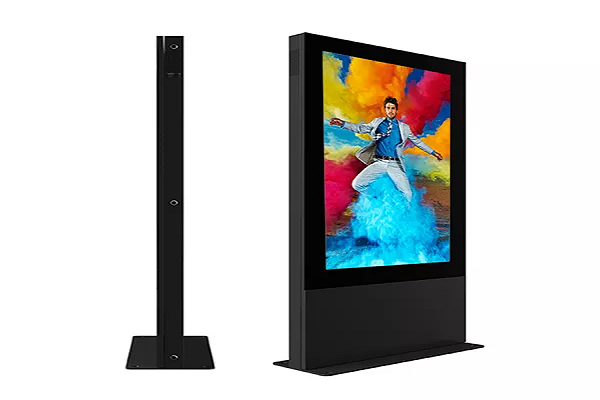Have you ever wondered what kind of technology your touchscreen uses? Optical Bonding LCD Monitors – You may make a wiser choice when purchasing an interactive display if you know how to screen bonding technology works. The touchscreen glass and LCD cell are glue together via optical bonding to cover the space left by the air. This is to increase overall performance, reduce display weight, and strengthen the touchscreen. Interactive displays tape to sunlight Readable Wall Mounted LCD Monitors and LCD cells by the edges of the screen glass. This results in an air gap between the LCD cell and the screen glass, and regardless of how small the air gap is, it negatively impacts the display’s performance. The gap causes drawbacks, including a more fragile screen glass, decreased touch sensitivity, and a smaller viewing angle.
The interactive display’s performance is improved in various settings, and a wider range of application needs can be satisfied thanks to the various advantages of optical bonding. The top 5 advantages are as follows:
Greater durability
The hardened adhesive behind the glass serves as a shock absorber in the optical bonding process, which better safeguards the cover glass and LCD cell from impact. A key benefit for transportation applications is that shakes and shocks are less likely to harm the display and glass. This is a crucial feature for safety in classrooms and meeting spaces because, in the unlikely event that the glass is broken, glass shards will stay stuck to the optical glue.
Improved viewing experience
An Optical Bonding LCD Monitors display, eliminates internal reflection between the LCD cell and the screen glass. The display may now view more clearly in brighter settings thanks to the increased contrast that this produces. It displays more clearly from a broader angle and in larger spaces because of the elimination of internal reflection, which also increases the viewing angle. All viewers can see the screen clearly and without reflection, regardless of whether student desks are place in the classroom’s front corners or meeting space.
Improved touch experience
Depending on your line of sight, parallax, the angle at which light refracts, causes a pen or finger to physically be located somewhere other than the corresponding spot on the LCD to appear. Optical bonding decreases parallax. As a result, there needs to be a better user experience and accurate touch. Optical bonding reduces the air gap, eliminating parallax to provide you with the most accurate touch and the most trustworthy experience.
Maximum dust & moisture protection
The elimination of air gap between the cover glass and the LCD panel and making it impossible for moisture and dust to get inside the glass and condense on its inner surface.So is crucial in humid areas since prolong exposure to high humidity can create fogging on displays that aren’t optically bond. It is crucial for storage and transportation to keep the displays in top condition for a lot longer.
Reduced display weight
The cover glass can be thinner thanks to the optical bonding technique because a layer of firm glue supports it. This considerably reduces the display’s weight, making it much lighter and more straightforward to handle and move.
The only proper bonding is optical. Despite claims to the contrary, only an optically bond display can legitimately for bonding. Other techniques are identical to the air bonding procedure in that they use tape to secure the LED cell to the glass, which inevitably results in an air gap. Only an optically bonded display can eliminate the air gap and offer these advantages.
Although optical bonding is frequently use in high-end smartphones. using this technology on larger panels, such as interactive displays, is more challenging.
The most cutting-edge optical bonding technology is use by Newline Interactive to provide optically bonded displays up to 86″ in size.
Final Talk
HUMMAX proudly incorporates optical bonding technology to deliver interactive displays with the best user experience. Optically bonded displays are more durable, easier to handle and transport, and provide better viewing and touch experience for everyone. Newline’s optically bonded displays include the TRUTOUCH X series 4K and the TRUTOUCH VN series.
Frequently asked questions
What is optical bonding?
So a small gap of air lies between the LCD module and the cover glass or touch panel of a monitor. Optical bonding is when a resin layer fills the gap, adhering the two together.
What is optical bonding in displays?
This is the process of laminating touchscreens, glass or plastic cover lenses, EMI filters, and other display enhancements to an LCD. A layer of adhesive is integrate between the cover layer and display to fill the air gap left behind in a typical perimeter or gasket bond.
Read more about us :
Commercial Advertising Bus Digital Signage | IP65 Outdoor Stainless LCD Digital Signage | Outdoor High Brightness LCD Totem | Outdoor High Brightness LCD Display | IP55 Waterproof Outdoor Digital Totem






Comments